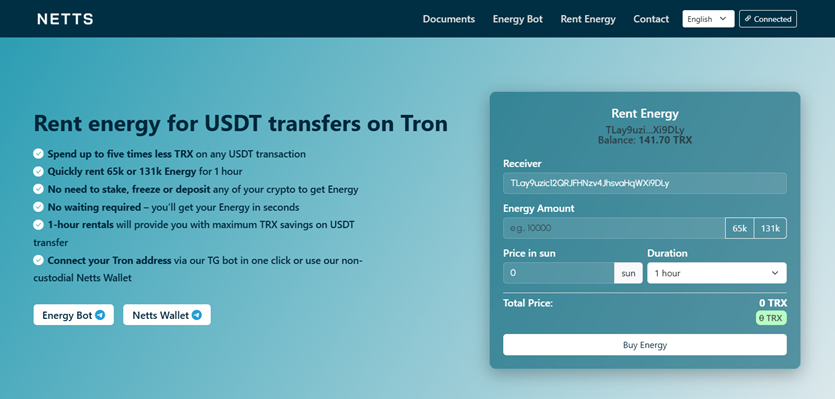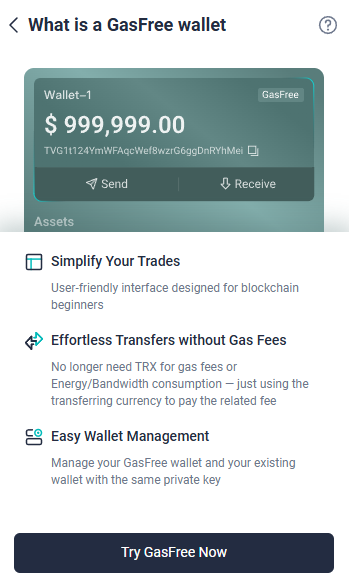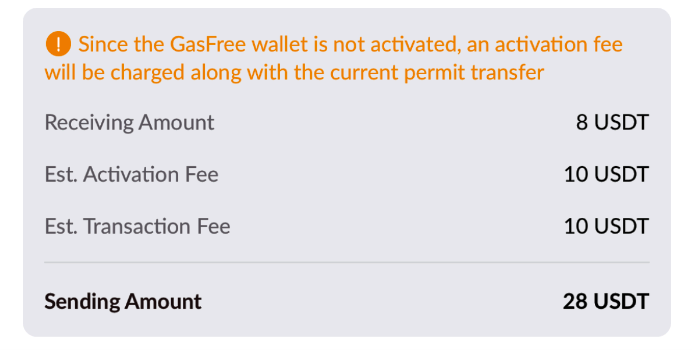GasFree vs Energy Rental: What to Choose in 2025?
The Tron blockchain is a very flexible cryptocurrency eco-platform that provides users with choices in transaction payment methods.
Even when interacting with simple transfers in TRC-10 tokens, you can choose: use TRX or Bandwidth for fee payment.
But Tron offers even more choice to users who interact with smart contracts.
For example, to pay fees for transferring USDT TRC-20, you can now choose the following options:
- only native TRX crypto;
- special resources Energy and Bandwidth + TRX (burned if resources are insufficient);
- only Energy and Bandwidth, if sufficient;
- completely gas-free transaction via the GasFree function — payment in USDT stablecoins.
Much has already been written about ways to minimize expenses by using special resources instead of native crypto,
and active users know that using Energy to pay for transactions is much more advantageous than burning TRX.
This is because Energy can be obtained as a reward for staking a substantial volume of TRX
or, much more conveniently and almost as profitably — renting Energy on special services.
In the latter case, savings in paying for USDT TRC-20 transfers can reach 80% on a service like NETTS.

Recently, another innovation from Tron caused a stir: using the GasFree function, a user can forgo using gas (Energy, Bandwidth, and TRX) to pay commissions for USDT TRC-20 transfers.
That is, in 2025, users of the eco-platform involved in USDT stablecoin transfers can choose between GasFree and Energy rental to pay for these transfer transactions.
Which option is better? Let's delve into the details.
How Does GasFree Work?
GasFree is a mechanism that allows users to send transactions without burning TRX, Energy, and Bandwidth.
The actual commission costs are passed on to the smart contract sponsor (service provider).
Essentially, these are meta-transactions in the Tron ecosystem.
- The user sends a transfer request (in USDT or another TRC-20 token) through a GasFree smart contract.
- The smart contract (sponsor) pays the system costs (TRX, Energy, Bandwidth).
- The user compensates the sponsor for the costs — pays the commission in another token (usually USDT).
This approach simplifies work for users who do not want to complicate their wallet balance with different assets and special resources.
GasFree allows sending USDT TRC-20 without TRX on the balance.
However, the price of such "compensation" can differ significantly from Tron network fees in native crypto and resources.
Because GasFree does not allow transactions with zero commission, but only shifts the commission from TRX to another token.
Advantages of GasFree
Complete absence of the need for TRX, as well as other gas components — special Tron resources Energy and Bandwidth.
Ease of use — sending transactions without complex settings.
Disadvantages of GasFree
- GasFree is only available in supported wallets and services.

- The service provider can disable GasFree support at any moment.
- Hidden fees or transaction limits may be imposed. By the way, the accompanying documentation includes a disclaimer that the transaction fee may be significantly higher than if the user paid the gas themselves, especially during high network congestion on Tron.
When using GasFree, the commission can be noticeably higher than when using "gas": current tests show amounts of 10–20 USDT per operation.
This is without even considering the payment for activating the GasFree Wallet (another 10 USDT).

How Does Energy Rental Work?
Energy renting — provision by a special service for a specific period (hour or more) of computing resources to reduce the commission for TRC-20 transactions.
Such rental allows the user to completely exclude TRX from transaction fees when interacting with smart contracts,
including when transferring USDT TRC-20.
Rented Energy allows for more transactions with minimal costs.
Advantages of Energy Rental
- Commission reduction by 2–3 times compared to regular transfers.
- Availability for any wallets and services.
- Flexibility — you can rent the required amount of energy for different durations.
- Full automation — when using Telegram bots or web interfaces, such as NETTS's Workspace.

Disadvantages of Energy Renting
The disadvantages of this method could possibly include the need to calculate the required Energy volume in advance and keep some TRX on the balance for rental.
And in the case of automating recharge, initial setup is required.
Some users stock up on "extra" TRX also to prevent transaction freezes in case of network overload.
Although this factor can also be eliminated simply by renting a larger volume of Energy or activating auto-recharge of the wallet, if interaction with smart contracts occurs under system overload conditions.
For example, the NETTS Energy rental service allows its clients, who send USDT TRC-20 to dozens of addresses daily, to choose a suitable mode for charging the balance:
- Host – this is "perpetual" Energy or the second option – resource supply according to a schedule approved by the client;
- Smart – trigger-based Energy supply: as soon as the resource reserves reach the specified level, the balance is replenished to the initial level.
GasFree vs. Energy Rental: Which is More Profitable?
Let's compare both methods based on key parameters.
| Parameter | GasFree | Energy Rental |
|---|---|---|
| Is TRX needed? | No | Yes |
| Fixed commission? | No (may depend on the provider) | Yes |
| Works with any TRC-20 tokens? | No (limited support) | Yes |
| Support in all wallets? | No | Yes |
| Suitable for mass transactions? | No | Yes |
| Transaction cost for transferring USDT TRC-20 to one address | from 10 USDT | ~3-6 TRX (depending on recipient's balance) |
Conclusion:
- The GasFree function is useful for large players who do not want to hold TRX and special resources to service a large number of addresses. But they must be prepared to pay an increased commission in USDT for convenience.
- GasFree is not the best choice for the mass audience of Tron users, but for special cases (corporate wallets, exchanges, B2B services) it can be a convenient option.
- GasFree is also convenient for beginners who find obtaining special resources complicated. But the high transaction fees prevent those who regularly interact with TRC-20 from using this method.
- Energy rental is suitable for everyone, including holders of significant USDT volumes and those who regularly transfer stablecoins, interact with smart contracts, and avoid inefficient expenses that can be easily eliminated by renting Energy.
From all the above, it follows that in 2025, Energy rental remains the main method for minimizing commissions in Tron. It is more advantageous than staking and much cheaper than GasFree.
The main thing is to carefully choose an Energy rental service. NETTS offers ease of use even for Tron beginners. No registration or account creation needed. Just log in via the website form or Telegram bot. Choose the payment method – preliminary one-time payment at a rate of 3–6 TRX per transaction or a deposit of 15 TRX, enough for 2–5 transactions. You can also use the new feature – auto-recharge via the Workspace web interface.
Just try how it works and get real 80% savings from the NETTS Energy rental service – https://netts.io
Workspace deposit – only 1 TRX.